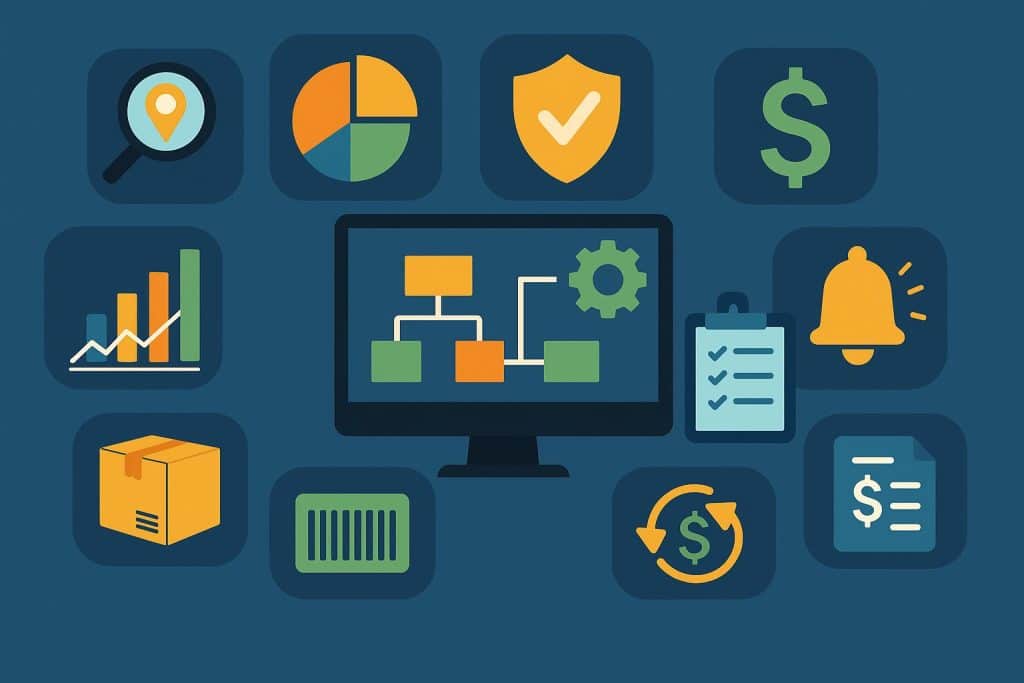Running a business in the digital age means that managing company assets with precision is paramount. It directly affects how well an organization, from a startup to a large enterprise, can operate. Imagine knowing where every company item is. Asset management software helps you track and handle all resources. Good software offers many features. This piece highlights nine important features in asset management software that help businesses operate and make wise decisions.
1. Real-Time Tracking
One of the primary benefits of asset management software is real-time tracking. You can keep a constant eye on your company’s belongings, knowing their exact location and condition. This will cut down on losses and encourage everyone to take more ownership of their work. When businesses clearly see their tools, they use them better and stop accidentally buying extras.
2. Maintenance Management
Regular maintenance is vital to extend the lifespan of assets. For this, getting all your equipment maintenance planned out without a hitch is key. Asset management software gives you schedules that help your team carry out necessary upkeep quickly and with minimal effort. Want to skip those surprise breakdowns and huge repair costs? Just track your equipment’s service history and upcoming maintenance jobs. Fixing equipment proactively keeps all your important items running like new.
3. Inventory Management
Managing inventory effectively is crucial for any organization. You can easily keep tabs on every item in your stock with asset management software solutions, making sure nothing ever runs out. Knowing what moves and when helps companies keep shelves full without overfilling the backroom. This saves storage space. When inventory runs smoothly, resources get used wisely.
4. Customizable Reporting
Every organization has unique needs, and customizable reporting caters to those specific requirements. The software churns out reports as required. They can detail how your assets perform and what that means for your wallet. These reports help you plan smarter choices. They connect your team and budget right to your company’s main targets.
5. Barcode and QR Code Integration
Barcode and QR code integration simplifies the process of tracking and managing assets. Businesses scan these codes and instantly pull up everything about an asset, such as its location, how it’s been used, and all its maintenance history. You can get accurate records with fewer manual mistakes and even get your time back. Managing assets with these solutions becomes much simpler.
6. Depreciation Tracking
Understanding asset depreciation is essential for financial planning and accounting. Tracking an asset’s declining worth is simple with this software. It crunches the numbers exactly, using the asset’s type and how long it’s projected to last. When you have this data, you can analyze your budget and present solid financial reports. You’ll follow all the money rules and become a pro at handling your cash.
7. User-Friendly Interface
A user-friendly interface is key to maximizing the potential of any software. Imagine using a tool where everything just makes sense. These asset management systems have easy-to-navigate screens, so you can easily manage all information, no matter how much you know about computers. Nobody struggles with this software. Its simple design means your team gets comfortable quickly, boosting their daily output and speeding up project finishes.
8. Security and Access Control
Protecting sensitive information is crucial for any organization. Your valuable asset data stays private because this software uses strong security measures. It allows only authorized team members to view data or make changes through access controls. Preventing unauthorized access and data breaches keeps asset information accurate. It builds strong trust throughout the company.
9. Integration with Other Systems
For seamless operations, asset management software often integrates with other business systems, such as accounting and enterprise resource planning (ERP) tools. With company systems connected, your order details instantly update inventory and shipping. This means you skip retyping and get things done much faster. You can get the complete picture of your business when its different parts connect.
Conclusion
Companies depend on asset management software to get top performance and value from their investments. It lets them see their assets instantly, plan their upkeep, and keep them safe. This software puts all those crucial asset management tools right at your fingertips. Imagine getting exactly the data you need. When your systems work together, your business runs smoothly and your plans get much sharper. Bringing in this kind of technology lets businesses handle their property and resources with greater precision. This sets them up to expand and win big, even against strong competition.
